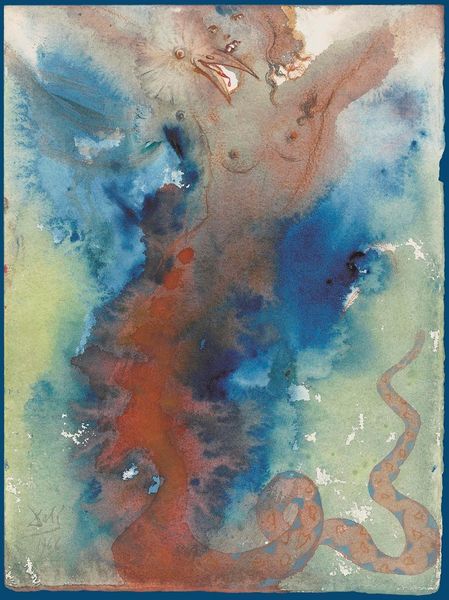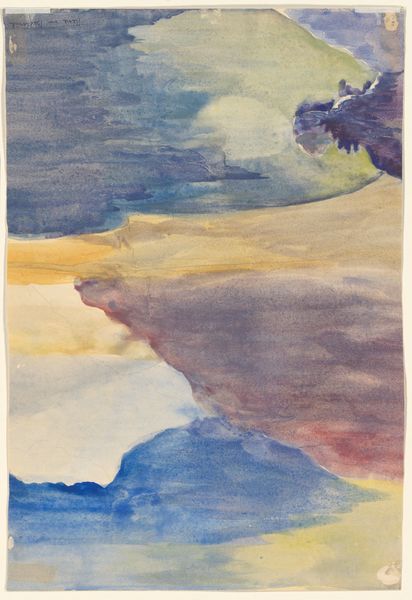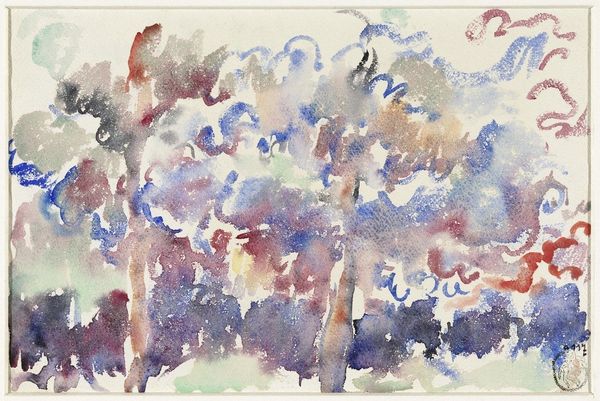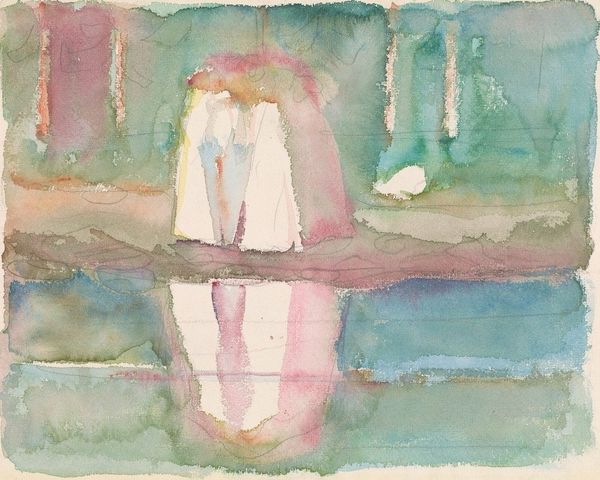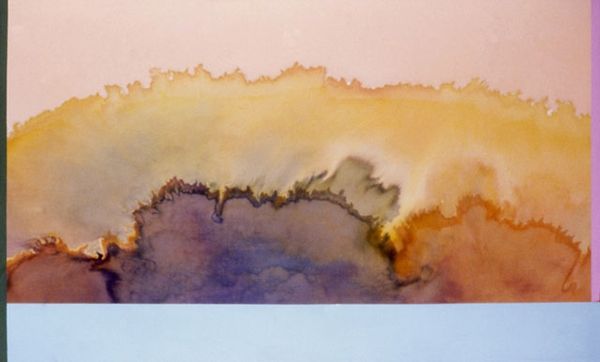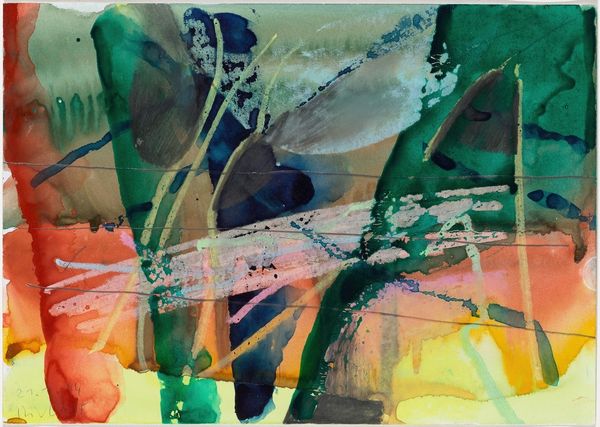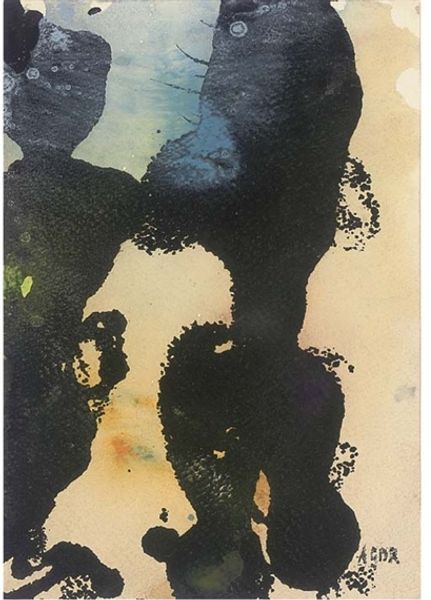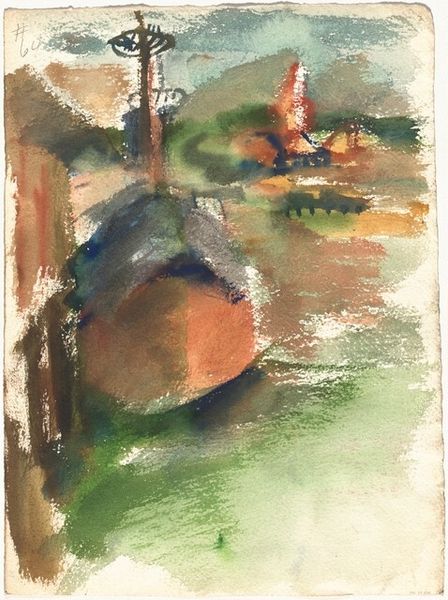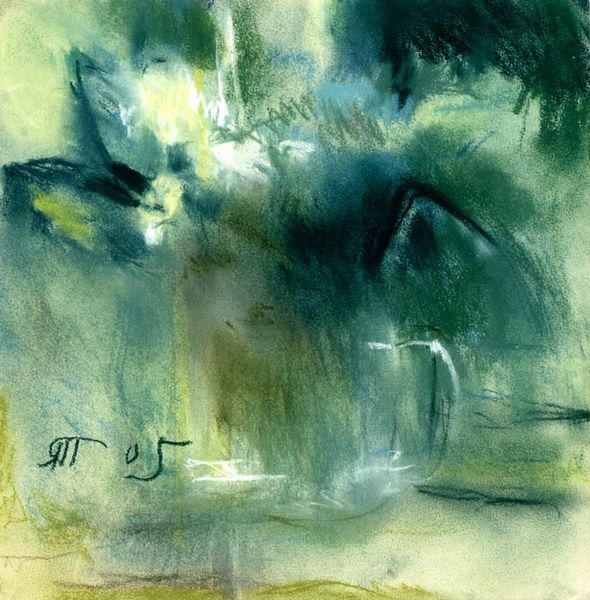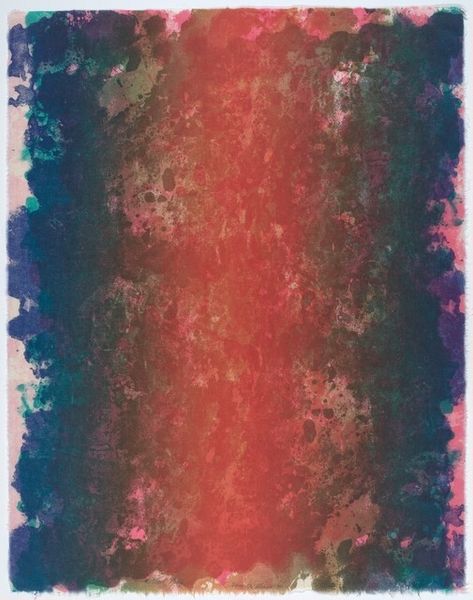
watercolor
#
organic
#
water colours
#
watercolor
#
abstraction
#
modernism
#
watercolor
Copyright: Georgia O'Keeffe,Fair Use
Editor: We're looking at Georgia O'Keeffe's watercolor, "Portrait No. III." The soft washes create this hazy, almost dreamlike quality. The organic shapes are suggestive but never quite resolve into recognizable forms. What do you see in this piece? Curator: O'Keeffe's abstraction is rarely just about pure form; it's deeply entwined with the politics of representation and the female gaze. Consider how early 20th-century male critics often pathologized her work, reducing it to mere Freudian symbolism. Doesn't that context affect how we view "Portrait No. III"? What do you feel, knowing this context? Editor: I can see that. The title pushes back a bit against purely abstract readings, hinting at the figure while deliberately obscuring it. It’s like she's refusing to be pinned down by any one interpretation. Is that her asserting control? Curator: Exactly. And we should note O'Keeffe's modernism, particularly its preoccupation with interiority. It’s a rendering of a psychological landscape, but one resistant to patriarchal interpretation. It asks us to move beyond the male gaze that often tried to confine female artists. Editor: So it’s not enough to just appreciate the colours and the composition? We also have to consider the societal expectations she was fighting against? Curator: Absolutely. Seeing her work within that feminist and cultural context empowers us to move toward decolonizing the aesthetic lens to question those norms. Editor: It’s made me look at abstraction in a totally new light. Thanks for opening up that perspective. Curator: My pleasure. It's always more rewarding when it prompts conversation, rather than closing it.
Comments
No comments
Be the first to comment and join the conversation on the ultimate creative platform.
